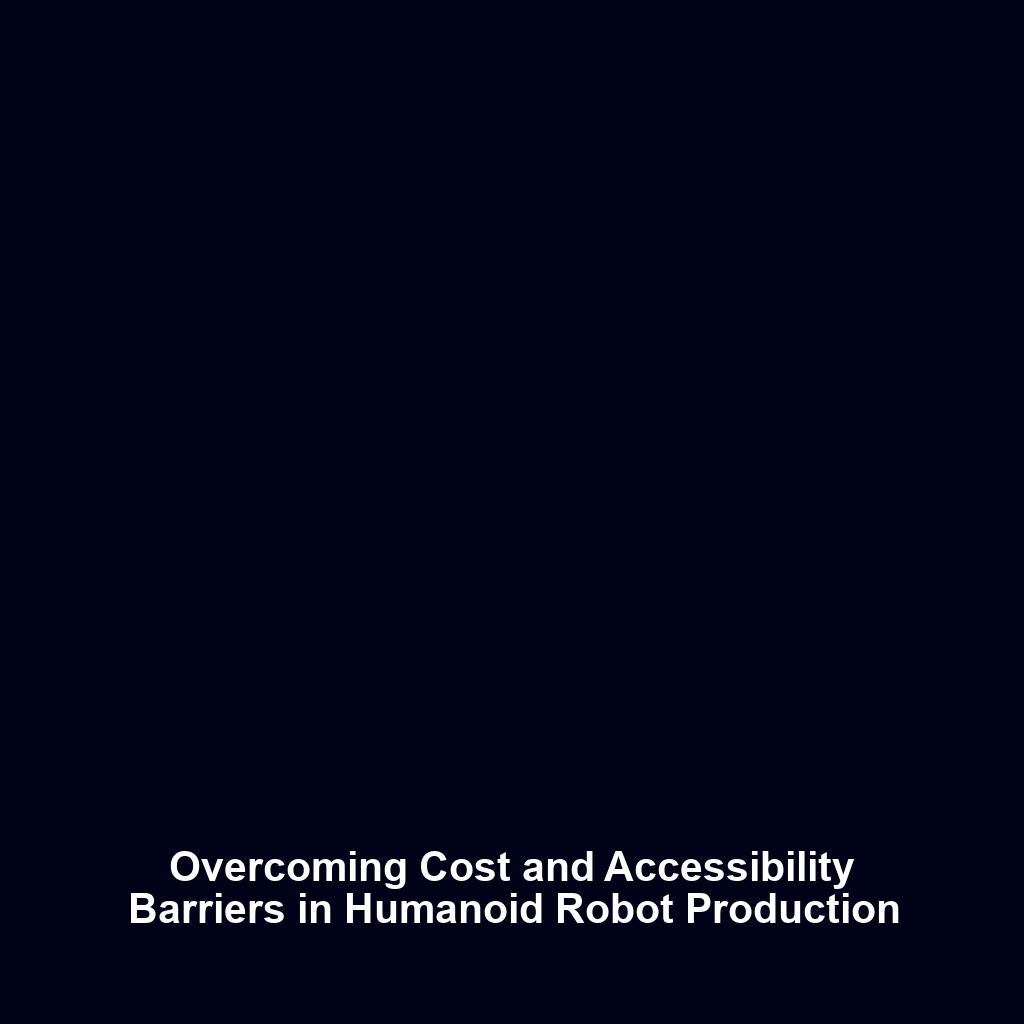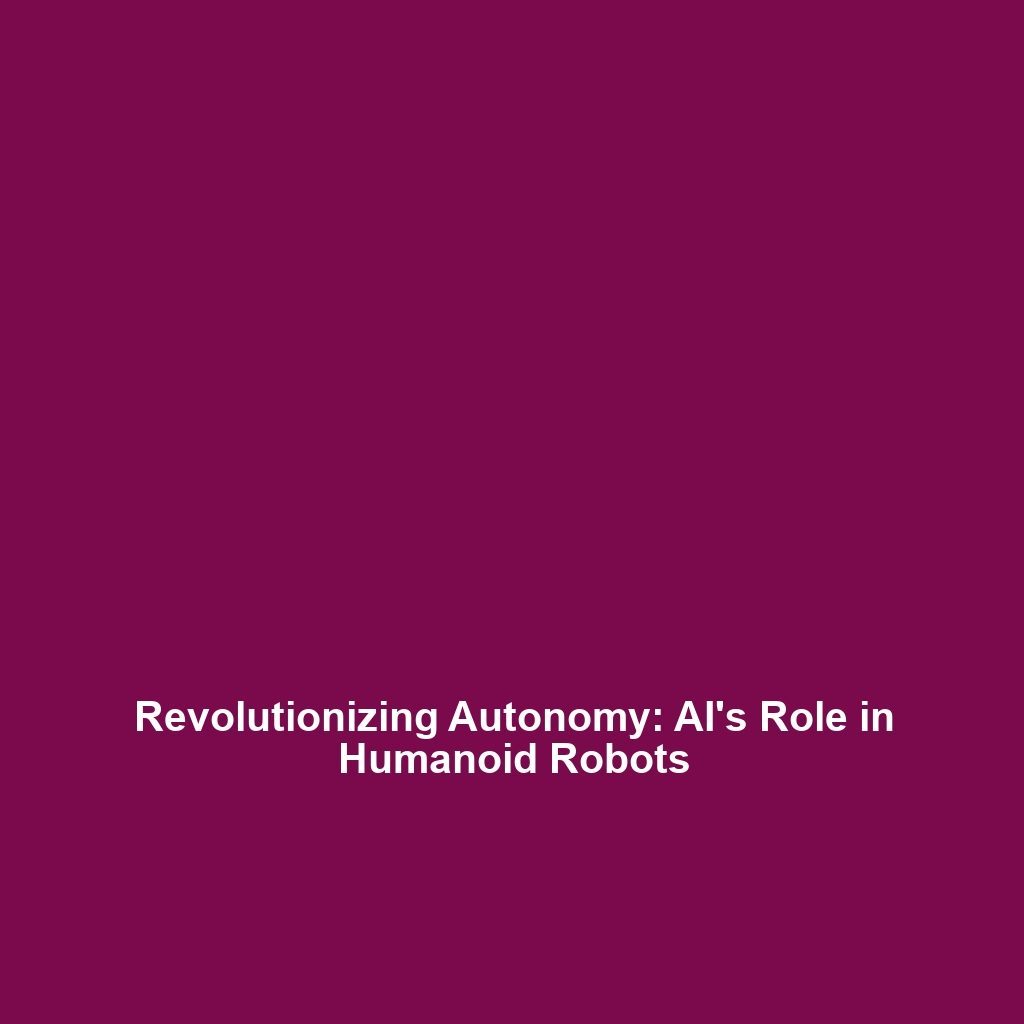Cost and Accessibility: Barriers to Mass Production of Humanoid Robots
Introduction
The dream of widespread use of humanoid robots faces significant hurdles related to cost and accessibility. These barriers impede mass production, affecting their integration into various sectors such as healthcare, service, and entertainment. Understanding these challenges is crucial as they dictate both the pace of technological advancement and consumer acceptance. This article delves into the financial components and accessibility issues shaping the future of humanoid robots, aiming to highlight the factors that must be considered for their successful mass adoption.
Key Concepts
Cost Analysis in Humanoid Robotics
The production costs associated with humanoid robots involve several elements, including:
- Material expenses, including metals, plastics, and components.
- Labor costs for skilled professionals in robotics and artificial intelligence.
- Research and development expenditures aimed at innovation and efficiency.
Accessibility Factors
Accessibility to humanoid robots is influenced by:
- Availability of technology in various regions.
- Economic inequality which hampers access to advanced robotics.
- Regulatory environments that may limit production and deployment.
Applications and Real-World Uses
Understanding how cost and accessibility impact humanoid robots leads us to their applications:
- Healthcare: Humanoid robots are used for patient care, providing assistance to the elderly and disabled.
- Customer Service: Various retail establishments deploy robots that interact with customers, showcasing products and answering questions.
- Education: Educational institutions utilize humanoid robots to engage students through interactive learning experiences.
Current Challenges
There are notable challenges of cost and accessibility within the realm of humanoid robots:
- High initial investment discourages businesses and startups from pursuing robotics.
- Limited local production facilities can increase costs due to reliance on imports.
- Market segmentation limits the variety of applications suitable for humanoid robots.
Future Research and Innovations
Exciting developments in research and technology promise to mitigate challenges related to cost and accessibility:
- Advancements in 3D printing may reduce manufacturing costs for parts.
- Artificial Intelligence (AI) developments will enhance robot functionality while lowering overall production costs.
- Increased collaboration between industries and academia can foster innovative solutions for accessibility issues.
Conclusion
In summation, cost and accessibility present significant barriers to the mass production of humanoid robots, influencing their implementation across various sectors. Addressing these challenges is critical for fostering innovation and widespread adoption of robotics technology. For further exploration of this topic, consider reading about the impact of industrial robots or the future of AI in robotics.






